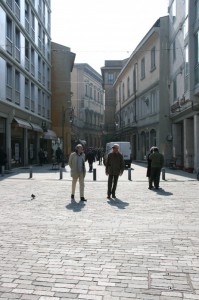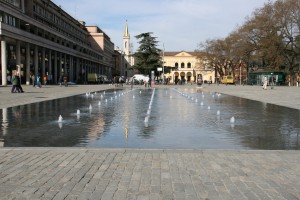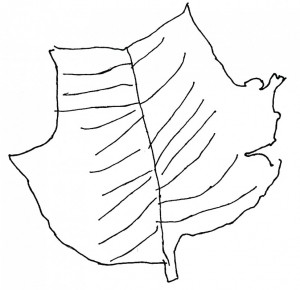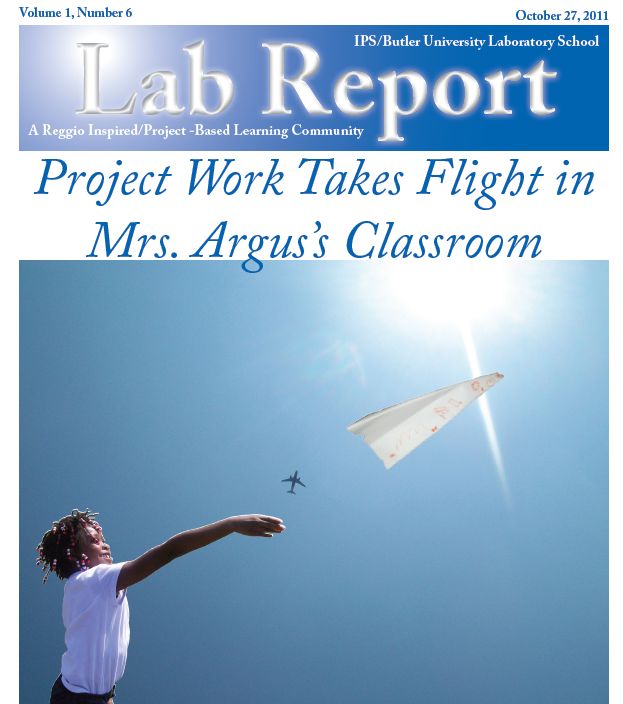
This photo was taken by Mr. Smith in Reggio Emilia, Italy
In the spring of 1945, following the liberation of Italy at the end of World War II, the citizens of a small village named Villa Cella, near the town of Reggio Emilia began rebuilding their community (Wexler, 2004). Abandoned German war relics including horses, some trucks and a tank were sold to fund the start of a school and the work began on donated land using wood and bricks from houses that had been bombed, and with the help of a young primary teacher named Loris Malaguzzi (Malaguzzi, 1998 & Gandini 2008), who is now recognized as the founder of the Reggio Approach.
From these humble beginnings, came what would eventually grow into the Preschools and Infant-toddler Centers of Reggio Emilia. These schools are now recognized around the world as the home of the Reggio Approach to early childhood education and they are located in and around the city of Reggio Emilia which is home to around 167,000 citizens representing 100 different ethnic groups (Barozzi, 2010). The Preschools and Infant-toddler Centers of Reggio Emilia have had a profound influence on the way teachers in the United States think about young children (Wexler, 2004). In fact, the influence of the schools has spread to North America, Northern Europe, Australia and New Zeland (Ovi, 2001). The schools were designed from the beginning to provide an education grounded in democratic ideas and critical thinking so that fascism would never again take hold of Italy (Dahlberg, Moss & Pence, 2007).
The city of Reggio Emilia budgeted 22,000,000 Euros to support the schools during the 2009-2010 school year (Rinaldi, 2010) and today the organization named Reggio Children includes 25 preschools and 27 infant-toddler centers located in 45 buildings and the Loris Malaguzzi International Center where international conferences on the Reggio Approach hosted by Reggio Children take place many times each year (Baldini & Vecchi, 2008). In addition to the schools and International Center, the Municipality of Reggio Emilia owns several versions (in different languages) of a travelling exhibit titled The Hundred Languages of Children. The many versions of this exhibit have been travelling across North America, Europe and Asia for more than 20 years telling the story of how teaching and learning takes place in the Preschools and Infant-toddler Centers of Reggio Emilia (Jacobson, 2007 & Cooper, 2008).
Baldini, R. & Vecchi, V. – Translation by Jane McCall (2008). Reggio Children Brochure. Reggio Emilia, Italy. Retrieved on February 11, 2010 from http://zerosei.comune.re.it/inter/rc_form.htm
Barozzi, A. (2010, March 17). The principles of the educational experience of the preschools and infant-toddler centers of the Municipality of Reggio Emilia. Presentation at Dialogues on Education: Students and Professors Study Group, Reggio Emilia, Italy.
Cooper, M. (2008). Anticipation and reflection of the exhibit. Innovations 15(2), 14-20.
Dahlberg, G., Moss, P. & Pence, A. (2007). Beyond quality in early childhood education and care: Languages of evaluation. New York: Routledge.
Gandini, L. (2008). Introduction to the schools of Reggio Emilia. In Gandini, L., Etheredge, S. & Hill, L. (Ed.), Insights and inspirations from Reggio Emilia: Stories of teachers and children from North America (pp. 24-27). Worcester, MA: Davis Publications.
Jacobson, L. (2007). Famed early-childhood philosophy expands horizons. Education Week, 26(22), 10-10.
Malaguzzi, L. (1998). History, ideas, and basic philosophy: An interview with Lella Gandini. (pp. 49-97). In Edwards, C., Gandini, L. & Forman, G. (Ed.). The hundred languages of children: The Reggio Approach – advanced reflections, second edition. Westport, CT: Ablex Publishing.

One of the many public squares or "piazzas" of Reggio Emilia, Italy
Tags: children, Malaguzzi, preschools, Reggio




